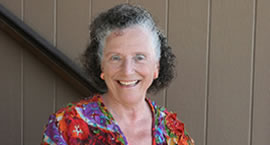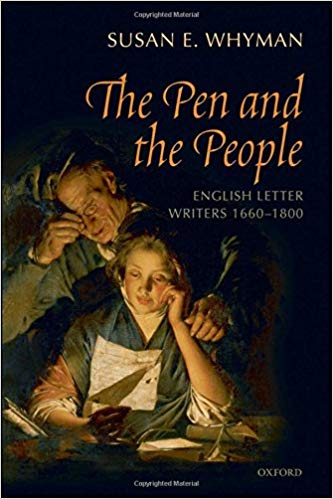Beaufort: The Duke and his Duchess 1657-1715. By Molly McClain
New Haven and London: Yale University Press, 2001. xvii, 262 pp. L20.00 ISBN 0300084110.(cloth)
Review by
Susan E. Whyman
At the start of Molly McClain’s political tale, the reader is placed at the hub of twelve radial avenues spreading out from the Duke of Beaufort’s country house at Badminton in Gloucestershire. This spectacular landscape, McClain argues, is also an ‘abstract representation of the Copernican Universe’ (xiii). It is, moreover, an arena in which the Duke and Duchess effect ‘profound cultural change’ transforming English culture ‘from spiritual doubt and uncertainty…into the confidence and optimism of the Enlightenment’ (p. 216). Like the bountiful estates and flowering plants cultivated respectively by Henry Somerset (1629-1700) first Duke of Beaufort and his wife Mary Capel Somerset (1630-1715), English culture has undergone a process of gradual metamorphosis in this period.
To demonstrate this claim, McClain first recounts Henry’s public life in England and Wales. She traces his career as the founder of a west-country political power base, an active member of Charles II’s privy council, lord president of the Council in the Marches of Wales, and lord lieutenant of Monmouthshire, Gloucestershire, Herefordshire, and Bristol. Henry was a Welsh fortune hunter who renounced Catholicism and married into the Protestant elite. Building upon his own family connexions and talents, he amassed immense estates and wealth. His political trajectory ranged from earnest young royalist to loyal Cromwellian, to servant of the Stuart kings for 30 years before becoming an isolated non-Juror. McClain vividly shows Henry rebuilding his war-ravaged estates, contending with local political rivals, and sparring with a vibrant, often recalcitrant, troupe of family relations.
At the same time, we follow the adventures of his wife Mary as her life intertwined with his. We see her distinguishing herself in the new emerging science of botany by creating one of the largest collections of exotic plants in England, along with a catalogue of over 750 species. Plagued by melancholy, she literally read, learned, and collected her way out of despair at various stages of her life. McClain paints dramatic portraits of Mary in her roles as wife, mother, grandmother, estate manager, account keeper, and unbridled consumer. For fifteen years after Henry’s death, we see her battling with kin, sometimes victorious, sometimes defeated, but always strong-willed and resolute. We obtain a rare multi-dimensional account of a woman of this period acting outside the bounds of the usual domestic stereotype.
McClain integrates a wide-ranging variety of primary and secondary sources, especially the family papers at Badminton. They include long runs of correspondence starting in the early 1630s. These intimate letters between family members allow her to successfully accomplish two of her stated goals: to describe the lives of wealthy aristocrats, and to give insights into a seventeenth century marriage. Carefully selected portraits complement the text. McClain also weaves passages from literary and historical documents, ranging from the Bible, Milton, and Locke, with privy council registers, diaries of military activities, parliamentary and political papers, estate papers, account books, portraits, prints, and seed catalogues. Finally, McClain uses story-telling techniques and flashbacks to construct a rich cultural context that includes the sounds, sights, tastes, and emotions of the period. Her fluent style provides easy accessibility to the educated general reader. To this end, she clearly explains customs, legal terms, and political concepts. Although her work has broad appeal, her parallel lives are solidly based on the traditional craft of archival research.
The result is an unorthodox combination of biography, political narrative, scientific inquiry, and psychological interpretation. This latter emphasis in which facts are presented as a stream of consciousness may lead the reader to question the license with which McClain claims to know her subjects’ inner thoughts. For example, statements about Mary’s attitudes to sex, love, and marriage are asserted by McClain as what ‘must have’ occurred in Mary’s mind. This psychological analysis brims with intimate insights, but sometimes leaves us uncertain as to the specific documents that led to McClain’s conclusions.
In terms of her own goals, McClain brings her personalities to life and shows their social and political relationships. Historians and biographers will admire her skill in blending social, political, and economic history without sacrificing a clear story line and argument. But does she convince us that Mary and Henry were representative of their class? And, did the two successfully bring order to their world through reason and scientific inquiry, as she claims?
The lives of the Duke and Duchess do provide us with larger historical insights. As we see Henry trying to dominate the west-country and Wales, we observe the tension and interplay between central and local politics that engaged many magnates. His successes and failures do show the common problems faced by other aristocrats who had to make their way after the Restoration. The lingering effects of Henry’s former Catholicism are clear and they help us to understand how individuals shifted and responded to religious change. But the portrait of Henry is one of a pragmatic ruthless administrator with great life-coping skills, not a man touched by the Enlightenment. He does come to life, but not specifically as a man of reason.
Mary, on the other hand, fits more naturally into McClain’s overarching enlightenment theory. Mary’s efforts to understand and control her natural world are nicely tied to her desire for information and her religious doubts. Badminton was the paradise in which she found salvation and her drawings, needle work, and catalogues offer potent symbols for her personal quest. Her correspondence also illustrates her intellectual friendships and more successfully fulfils McClain’s promise to give us an unusual view of the early days of Enlightenment science and rationalism.
Henry’s grand Copernican universe outlined in Badminton’s landscape wass the framework in which Mary’s tiny specimens were collected as the couple made their way through the maze of post-Restoration life. These symbols may not deliver all that McClain promises. They will, however, give a broad range of readers new insights into how real individuals tried to control the natural and political world around them. Teachers and students will enjoy reading this carefully researched book.





